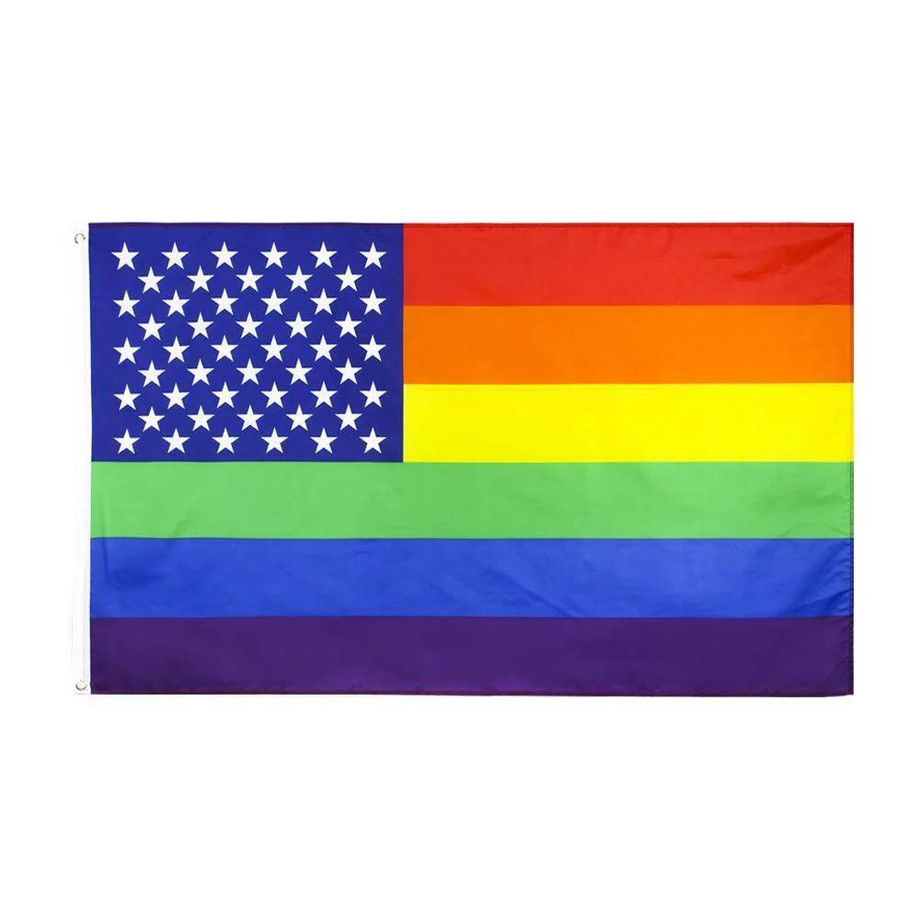The American flag, a symbol of freedom, strength, and unity, has long represented the ideals upon which the nation was founded. Its stars and stripes embody a rich history of resilience and the pursuit of equality for all citizens. When paired with the vibrant colors of the rainbow, often associated with the LGBTQ+ community, the flag takes on a deeper and more inclusive meaning, reflecting a growing movement toward acceptance, diversity, and solidarity.
A Fusion of Symbols
The traditional US flag consists of 13 stripes, symbolizing the original colonies, and 50 stars, representing the states in the union. Each part holds significance, yet the flag as a whole stands for the collective spirit of the American people. The rainbow, with its spectrum of colors, is an equally potent symbol, representing the beauty and strength of diversity. First adopted as a symbol of LGBTQ+ pride in 1978, the rainbow flag was designed by artist Gilbert Baker to highlight the inclusivity and individuality of each person in the community.
When these two powerful symbols merge, they represent a commitment to ensuring that freedom, justice, and equality are accessible to all, regardless of sexual orientation, gender identity, or background. The fusion of the US flag and the rainbow reflects a broader definition of liberty — one that embraces diversity as an essential part of what makes America strong.
The Rainbow Flag’s Meaning
Each color of the rainbow flag holds its own specific meaning. Red stands for life, orange for healing, yellow for sunlight, green for nature, blue for harmony, and purple for spirit. These colors represent the various elements that make up the human experience, but also the spectrum of identities that exist within the LGBTQ+ community.
Overlaying the rainbow on the US flag sends a message that these values—life, healing, harmony—are not exclusive to one group but are integral to the American experience. It serves as a reminder that the quest for equality and respect for individuality are core principles of democracy.
A Call for Inclusivity
In recent years, the combination of the US flag and the rainbow has been a rallying point for many who seek to challenge the barriers of discrimination and create a more inclusive society. It is more than just a symbol of LGBTQ+ pride—it’s a symbol for anyone who believes in a fair and equal society where differences are celebrated rather than suppressed.
The message of this hybrid flag is clear: America’s strength lies in its diversity, and true unity can only be achieved when all its citizens, regardless of identity, feel seen and valued. By displaying the US flag with the rainbow, individuals and organizations can show their support for an inclusive America that upholds the values of freedom and equality for all.
A Step Toward Progress
While progress has been made in the fight for LGBTQ+ rights, there is still work to be done. The US flag with the rainbow is not just a symbol of unity—it’s also a call to action. It reminds us of the ongoing fight for equal rights and the importance of standing in solidarity with marginalized communities.
As the nation continues to evolve, symbols like this hybrid flag serve as a reminder of the ideals America strives for: liberty, justice, and equality for all people. Embracing the US flag with the rainbow is a way to recognize that true patriotism involves lifting up all members of society and ensuring that everyone has the opportunity to thrive.
Conclusion
The US flag, when combined with the rainbow, creates a powerful symbol of unity, inclusivity, and hope for a better future. It represents a nation that honors diversity and strives for equality. By embracing this symbol, we acknowledge the richness of our differences and commit to building a more inclusive and just America—one where every person is free to live authentically and with pride.

